Southsea blacksmith Peter Clutterbuck talks about his years of planning to create huge Daedalus statue at Solent Airport
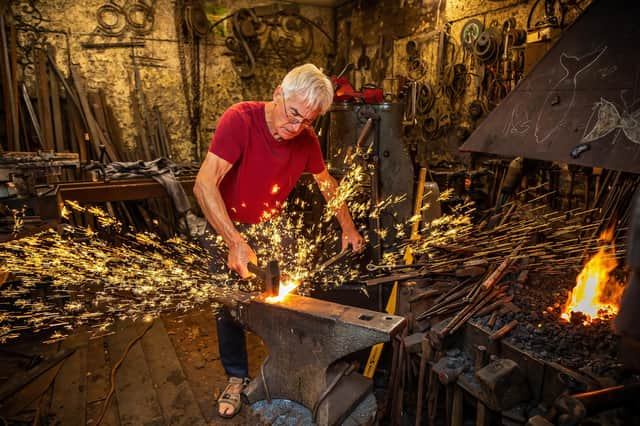

The 21ft tall, three tonne steel sculpture is Daedalus in Flight – named in tribute to the Lee-on-the-Solent airfield’s original name.
It depicts the inventor Daedalus, from Greek mythology, who famously made wings for him and his son Icarus so they could escape from Crete.
Advertisement
Hide AdAdvertisement
Hide AdAnd it is the work of blacksmith Peter Clutterbuck and his team.
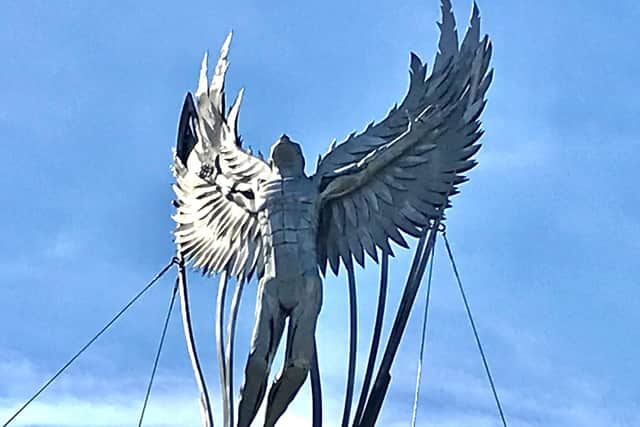

With 51 years experience under his belt, Peter’s work is visible across the region – from the Falklands Arch in Fareham, to the Bandstand in Southsea.
Peter, who is based at The Forge in Osborne Road, Southsea, says: ‘I started as a blacksmith in 1970 after I'd finished Portsmouth Art College.
‘I wanted to make sculptures and this one we've just done, Daedalus, it was like a 50 year wait for me to do my big piece, which is what I really dreamt of when I was at college.’
Advertisement
Hide AdAdvertisement
Hide AdPeter describes the project as ‘in the planning for five years, give or take.’
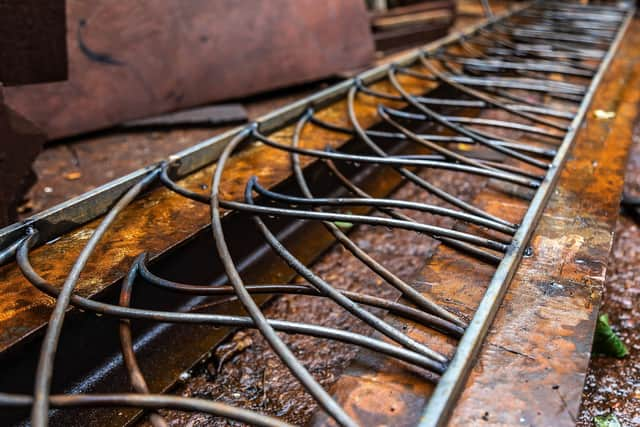

The project was overseen by Fareham Borough Council, with the National Grid paying its £100,000 cost.
Five designs were put to a public vote in summer 2019, with Nigel Searle's eye-catching figure winning by a landslide, netting as many votes as the other four combined.
The first step was to create a one-third scale model – pictured on the front next to the full sculpture when they were briefly together – which was done in early 2020.
Advertisement
Hide AdAdvertisement
Hide Ad‘We spent three months doing the model, the two metre version that we made first, because something I learnt in college was that if you're going to do a big piece, then you do a little piece to start with and we use that template, every element of that, to just expand it by three, and then we got our six metre piece.’
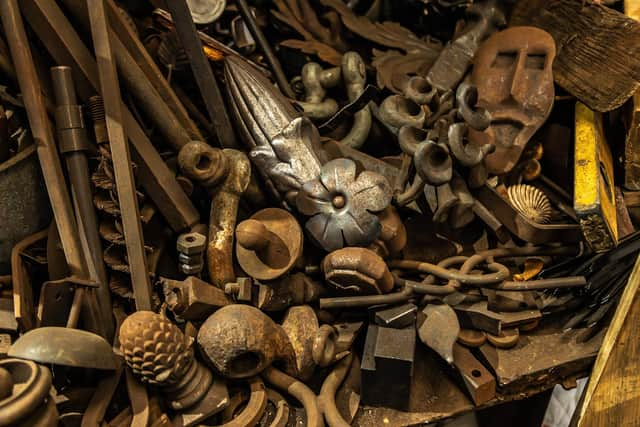

With their payment being held until the sculpture was well advanced, Peter says: ‘‘We had to do other work in the meantime to finance the sculpture while we were going on, but really it was quite comfortable.
‘We actually finished in November 2020 and then it was put on a lorry and taken up to Bradford to one of the biggest galvanizing tanks in the country and it was hot dipped galvanized in one piece and we designed it around the size of their tank which is quite narrow so it's only two metres wide so the sculpture itself on edge, wing tip to wing tip looking across the body is no more than about 180cm.
‘The height was also a problem because they had to double dip it which was very awkward with a hot thing you're dipping it in a molten bath of zinc so the height is 21ft, and it stands on a plinth which is half a metre and it's on a mound which is about five metres, so the whole thing is quite up in the air.
Advertisement
Hide AdAdvertisement
Hide AdBecause of the massive scale of the final Peter explains: ‘We used an 80 tonne press to get some of the bends that didn't need heating and then we had to work out exactly what bit goes where.
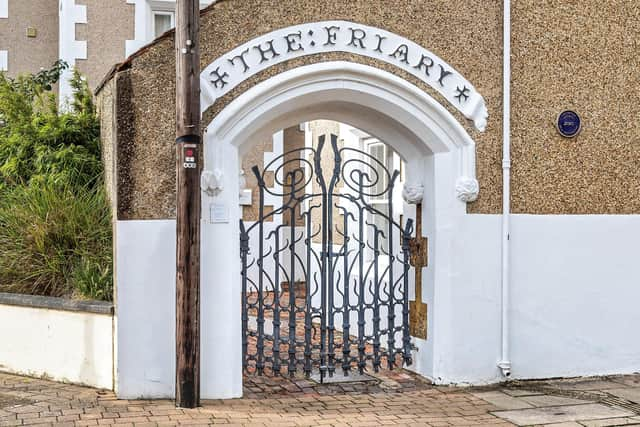

‘When you're standing in front of the nose or the chest you've got a whole lot of distance between you and the ground so you can't stand back and look at it and say: “That looks right,” like you can with a model so it's very very difficult to make.
‘We weren't using computers to build it or lasers, or anything like that. We just had to measure it and work out what bit went where and how it went together. We had to be right on top of it.
‘It was a team effort. my friend Nigel designed it. We couldn't have done it without his drawings. He designed and conceived everything about it other than actually making it and interpreting his pencil lines into reality.
Advertisement
Hide AdAdvertisement
Hide Ad‘Patrick Mannerings was the real backbone of all the drama that went on in getting it right and worrying about it and how to approach it and make it but I was doing the logistics and trying to organise and work out how to do it.’
Peter’s step-son John Duffield, who has worked alongside Peter for more than 30 years was also a ‘key figure’ in the team.
‘Without the aid of computers we've got to bend it and bash it and heat it and beat it until it goes where we want it to go.’
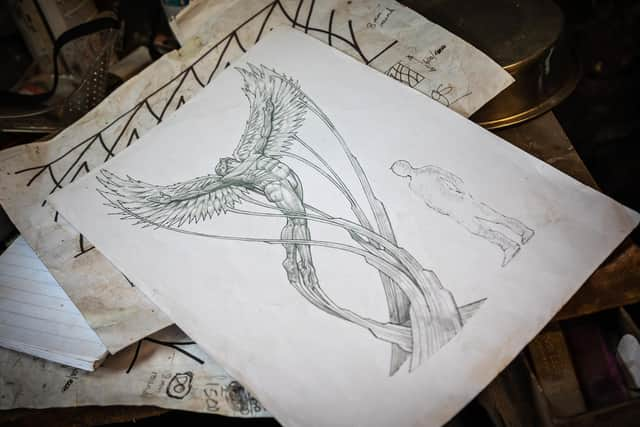

HMS Daedalus was first established during the First World War as a seaplane base, serving as a training establishment for the Fleet Air Arm for most of its existence, until its closure in 1996. Fareham Borough Council now owns much of the site.
Advertisement
Hide AdAdvertisement
Hide Ad‘Some of the first planes that ever flew, flew from Daedalus.
‘There's an education centre there, an enterprise centre which is where they're going to have the two metre model in the foyer to inspire the students.
Fareham Borough Council wanted that connection to the name.
‘We had some quite dramatic more abstract versions in a different pose where he was about to leap off a bit like someone starting the 100m race about to take off with its wings but they didn't like it.
’It does what it says on the tin. It is him. He's there and he's showing himself off as taking off.
Advertisement
Hide AdAdvertisement
Hide Ad‘Most people say they love it besides a few people who say it scares off their horses!
‘It is supposed to be a sort of liberating image of freedom and aspiration. It's supposed to have all of those elements.’
A message from the editor, Mark Waldron.
You can subscribe here for unlimited access to our online coverage, including Pompey, for 26p a day.
Comment Guidelines
National World encourages reader discussion on our stories. User feedback, insights and back-and-forth exchanges add a rich layer of context to reporting. Please review our Community Guidelines before commenting.